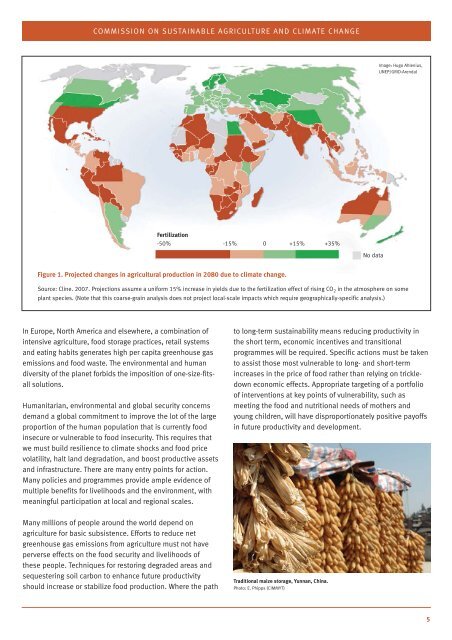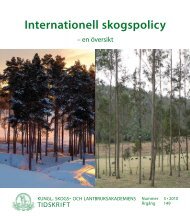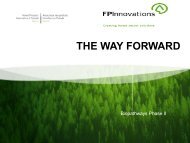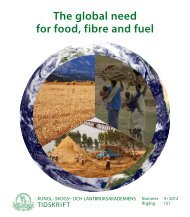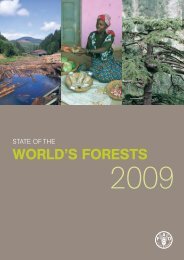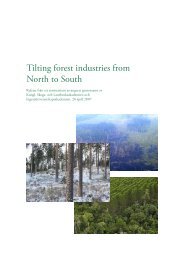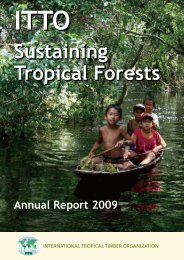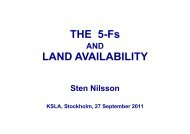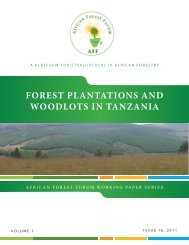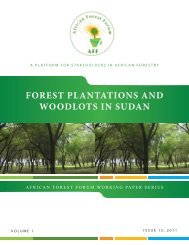Achieving food security in the face of climate change - CGSpace ...
Achieving food security in the face of climate change - CGSpace ...
Achieving food security in the face of climate change - CGSpace ...
You also want an ePaper? Increase the reach of your titles
YUMPU automatically turns print PDFs into web optimized ePapers that Google loves.
COMMISSION ON SUSTAINABLE AGRICULTURE AND CLIMATE CHANGE<br />
Image: Hugo Ahlenius,<br />
UNEP/GRID-Arendal<br />
Fertilization<br />
-50% -15% 0 +15% +35%<br />
No data<br />
Figure 1. Projected <strong>change</strong>s <strong>in</strong> agricultural production <strong>in</strong> 2080 due to <strong>climate</strong> <strong>change</strong>.<br />
Source: Cl<strong>in</strong>e. 2007. Projections assume a uniform 15% <strong>in</strong>crease <strong>in</strong> yields due to <strong>the</strong> fertilization effect <strong>of</strong> ris<strong>in</strong>g CO 2 <strong>in</strong> <strong>the</strong> atmosphere on some<br />
plant species. (Note that this coarse-gra<strong>in</strong> analysis does not project local-scale impacts which require geographically-specific analysis.)<br />
In Europe, North America and elsewhere, a comb<strong>in</strong>ation <strong>of</strong><br />
<strong>in</strong>tensive agriculture, <strong>food</strong> storage practices, retail systems<br />
and eat<strong>in</strong>g habits generates high per capita greenhouse gas<br />
emissions and <strong>food</strong> waste. The environmental and human<br />
diversity <strong>of</strong> <strong>the</strong> planet forbids <strong>the</strong> imposition <strong>of</strong> one-size-fitsall<br />
solutions.<br />
Humanitarian, environmental and global <strong>security</strong> concerns<br />
demand a global commitment to improve <strong>the</strong> lot <strong>of</strong> <strong>the</strong> large<br />
proportion <strong>of</strong> <strong>the</strong> human population that is currently <strong>food</strong><br />
<strong>in</strong>secure or vulnerable to <strong>food</strong> <strong>in</strong><strong>security</strong>. This requires that<br />
we must build resilience to <strong>climate</strong> shocks and <strong>food</strong> price<br />
volatility, halt land degradation, and boost productive assets<br />
and <strong>in</strong>frastructure. There are many entry po<strong>in</strong>ts for action.<br />
Many policies and programmes provide ample evidence <strong>of</strong><br />
multiple benefits for livelihoods and <strong>the</strong> environment, with<br />
mean<strong>in</strong>gful participation at local and regional scales.<br />
to long-term susta<strong>in</strong>ability means reduc<strong>in</strong>g productivity <strong>in</strong><br />
<strong>the</strong> short term, economic <strong>in</strong>centives and transitional<br />
programmes will be required. Specific actions must be taken<br />
to assist those most vulnerable to long- and short-term<br />
<strong>in</strong>creases <strong>in</strong> <strong>the</strong> price <strong>of</strong> <strong>food</strong> ra<strong>the</strong>r than rely<strong>in</strong>g on trickledown<br />
economic effects. Appropriate target<strong>in</strong>g <strong>of</strong> a portfolio<br />
<strong>of</strong> <strong>in</strong>terventions at key po<strong>in</strong>ts <strong>of</strong> vulnerability, such as<br />
meet<strong>in</strong>g <strong>the</strong> <strong>food</strong> and nutritional needs <strong>of</strong> mo<strong>the</strong>rs and<br />
young children, will have disproportionately positive pay<strong>of</strong>fs<br />
<strong>in</strong> future productivity and development.<br />
Many millions <strong>of</strong> people around <strong>the</strong> world depend on<br />
agriculture for basic subsistence. Efforts to reduce net<br />
greenhouse gas emissions from agriculture must not have<br />
perverse effects on <strong>the</strong> <strong>food</strong> <strong>security</strong> and livelihoods <strong>of</strong><br />
<strong>the</strong>se people. Techniques for restor<strong>in</strong>g degraded areas and<br />
sequester<strong>in</strong>g soil carbon to enhance future productivity<br />
should <strong>in</strong>crease or stabilize <strong>food</strong> production. Where <strong>the</strong> path<br />
Traditional maize storage, Yunnan, Ch<strong>in</strong>a.<br />
Photo: E. Phipps (CIMMYT)<br />
5


